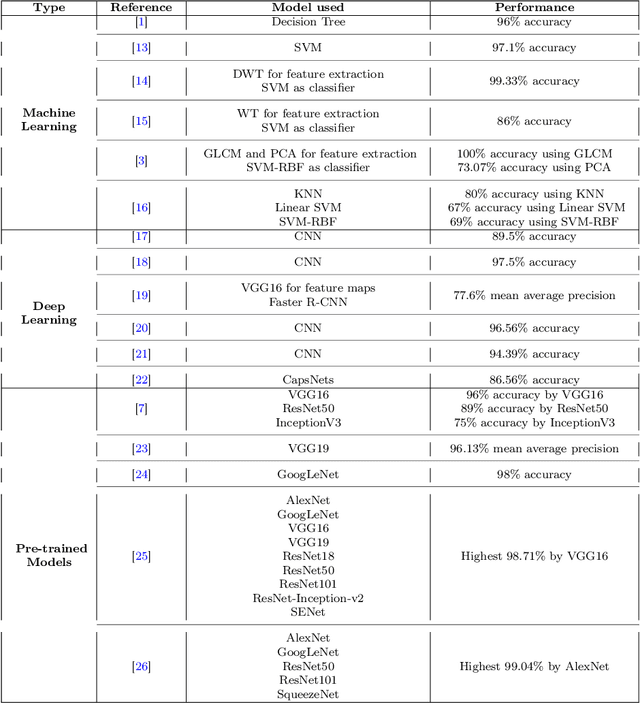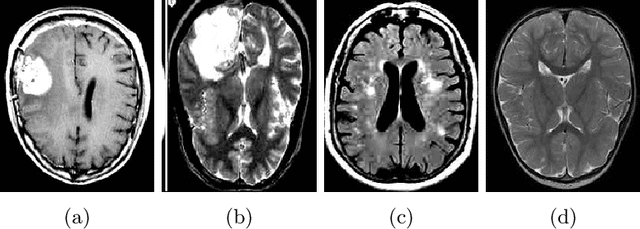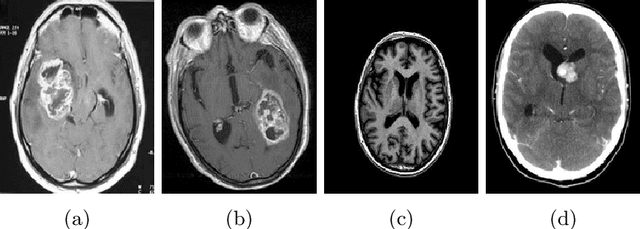Md Tanvir Rouf Shawon
Explainable Cost-Sensitive Deep Neural Networks for Brain Tumor Detection from Brain MRI Images considering Data Imbalance
Aug 01, 2023



Abstract:This paper presents a research study on the use of Convolutional Neural Network (CNN), ResNet50, InceptionV3, EfficientNetB0 and NASNetMobile models to efficiently detect brain tumors in order to reduce the time required for manual review of the report and create an automated system for classifying brain tumors. An automated pipeline is proposed, which encompasses five models: CNN, ResNet50, InceptionV3, EfficientNetB0 and NASNetMobile. The performance of the proposed architecture is evaluated on a balanced dataset and found to yield an accuracy of 99.33% for fine-tuned InceptionV3 model. Furthermore, Explainable AI approaches are incorporated to visualize the model's latent behavior in order to understand its black box behavior. To further optimize the training process, a cost-sensitive neural network approach has been proposed in order to work with imbalanced datasets which has achieved almost 4% more accuracy than the conventional models used in our experiments. The cost-sensitive InceptionV3 (CS-InceptionV3) and CNN (CS-CNN) show a promising accuracy of 92.31% and a recall value of 1.00 respectively on an imbalanced dataset. The proposed models have shown great potential in improving tumor detection accuracy and must be further developed for application in practical solutions. We have provided the datasets and made our implementations publicly available at - https://github.com/shahariar-shibli/Explainable-Cost-Sensitive-Deep-Neural-Networks-for-Brain-Tumor-Detection-from-Brain-MRI-Images
Bengali Handwritten Digit Recognition using CNN with Explainable AI
Dec 23, 2022



Abstract:Handwritten character recognition is a hot topic for research nowadays. If we can convert a handwritten piece of paper into a text-searchable document using the Optical Character Recognition (OCR) technique, we can easily understand the content and do not need to read the handwritten document. OCR in the English language is very common, but in the Bengali language, it is very hard to find a good quality OCR application. If we can merge machine learning and deep learning with OCR, it could be a huge contribution to this field. Various researchers have proposed a number of strategies for recognizing Bengali handwritten characters. A lot of ML algorithms and deep neural networks were used in their work, but the explanations of their models are not available. In our work, we have used various machine learning algorithms and CNN to recognize handwritten Bengali digits. We have got acceptable accuracy from some ML models, and CNN has given us great testing accuracy. Grad-CAM was used as an XAI method on our CNN model, which gave us insights into the model and helped us detect the origin of interest for recognizing a digit from an image.
 Add to Chrome
Add to Chrome Add to Firefox
Add to Firefox Add to Edge
Add to Edge